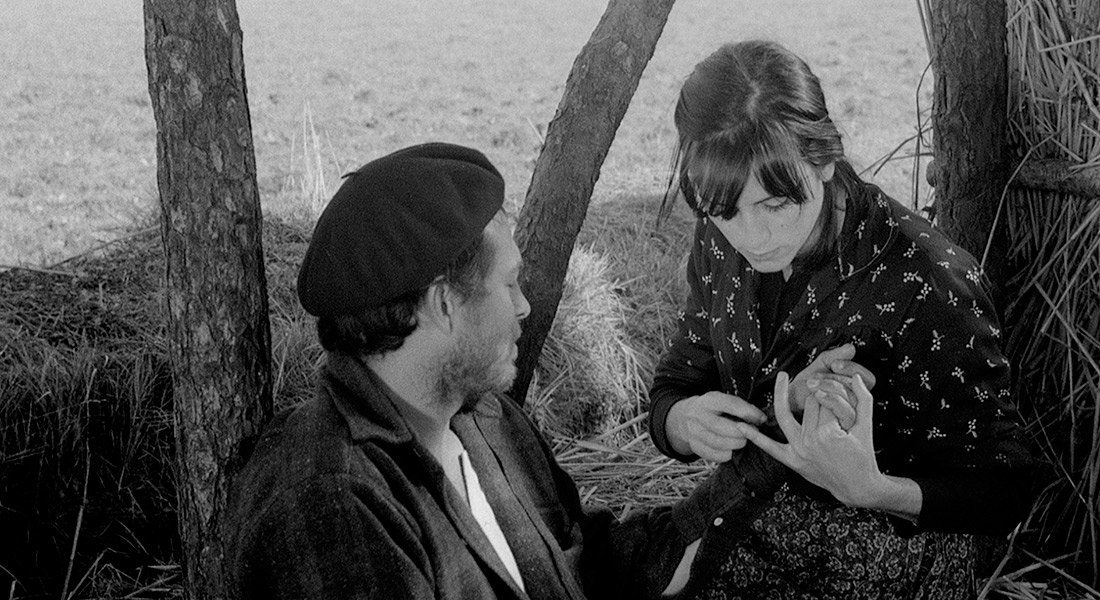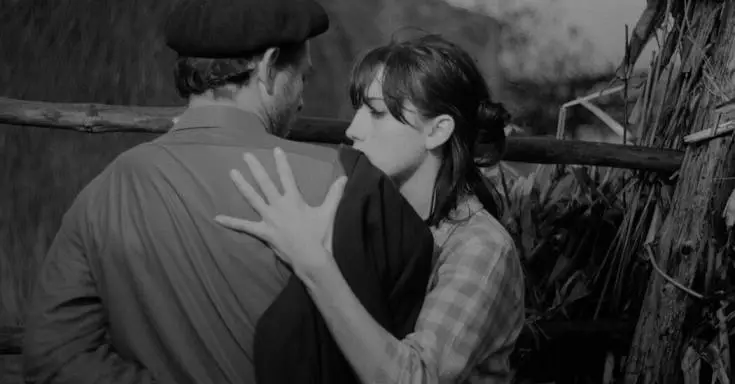Crafted by master in portuguese chief Pedro Costa continues by sluggish, estimated advances. Albeit each film sanctions a proper takeoff from the past one, taken overall, the direction shows a consistently refined vision that brings into nearer center the daily existences of Lisbon's poor, while opening up monstrous verifiable vistas the African diaspora, the slave exchange in which they may be set.
Prestigious among cinephiles for his severe, fantastic 'Fontaínhas set of three', Costa remains to a great extent obscure past that world. How and where should his oeuvre be arranged?
By what size of values should his work be judged? Endeavors to characterize his film with regards to regular classifications geo-social setting, topic and settings, realistic modes, the customized film language of the auteur have a perturbing propensity to undermine the actual classes.

First of all, setting. Costa's work could at first be arranged in the reflexive custom of contemporary European film, grounded in the basic ordinance making of the new wave and neo-pragmatist scholar professionals. His initial profession helped from an overall perspective from the copious eec subsidizing that assisted with supporting Portuguese film schools and backing a resurrection of public film after the 1974 Carnation Insurgency.
However master in portuguese, as analyzed by Boaventura de Sousa Santos, the nation's driving social rationalist, has long existed inside two zones, or time-spaces: in addition to an European yet a 'provincial zone', crossing the seas; and possessing fringe and in reverse situations inside both. For Portugal, concerning its previous provinces, 'lingering behind implied having a tricky past' and 'as an issue, the past turned into an unpreventable piece of the present.
Footnote1 Inside the Lusophone world, post-frontier relations among Portugal and Brazil have designed those of the uk and us the previous state taking off over its one-time ruler in world significance and social creation however cast in a more scattered, old and amazing register, inside which Africa bears a conclusive weight.
Trending Post: The Boys Sauna Scene Season 4 Watch Time 2024
In addition to the European New Wave yet the progressive feel of Brazil's film novo impacted the age of Portuguese chiefs that quickly gone before Costa's, including his talented and quirky educator, the ethnographic movie producer Antonio Reis.footnote2
The certain presence of the hazardous pioneer past, as de Sousa puts it, shapes a subtext in much contemporary Portuguese cinema.footnote3 Yet Costa's conscious and supported decision of Cape Verdean settings and subjects addresses an alternate kind of responsibility. His Fontaínhas set of three was set in the jerry-assembled homes and rear entryways of Lisbon's secret ghetto.
At the point when the area was destroyed and its occupants delivered out to splendid and unstable elevated structures on the city's edge, Costa recorded the obliteration and followed his characters out, reporting the departure of a gathering made workers by and by. This tireless and patient look on a specific region and its occupants marks out his solitary methodology.
Costa's subjects are, as Jacques Rancière has noted, 'laborers without work', without a working people or class battle, apparently caught in the ahistorical reality of the everyday.footnote4 In a new paper, Emilie Bickerton has considered Costa's work with regards to another type of post-modern 'proletkino' film, detectable in the movies of the Dardennes, Guédiguian and Loach.footnote5 As Costa himself has put it.

A large portion of humanity's accounts I mean the tales of the lower classes either have been told wrongly or haven't been told by any means. So film needs to step in.'footnote6 Yet as Bickerton recommended, Costa's conventional experimentalism and utilization of various artistic modes and classes fiction, ethnography, narrative, authenticity and oddity; noir, zombie, acting, mission additionally made him an exception in this organization of naturalistic element creators.
'All extraordinary fiction films incline toward narrative, similarly as all incredible narratives tend towards fiction', Godard broadcasted, on seeing Jean Rouch's Moi, un Noir in 1958. Rouch's development was to broaden the revolutionary ethnographic practice spearheaded by Robert Flaherty, in which the subject turned into a functioning member in the film-production process, to present an ad libbed fictitious component, manufacturing another mode among fiction and narrative.
The ethnographic component of Costa's work frontal areas the emblematic designs and foundations dissected by human studies the home, the medical clinic, the work environment, the express, the road in this way suggesting them likewise as conversation starters for film analysis. Without a doubt for Costa, as he put it in a discussion at the Tokyo Film School, these emblematic designs have been essential for film's collection of implications all along.
The Chaplin character in The Vagrant, when he enters an exclusive lodging or a bank, he's quickly tossed out. You see that over and again in Chaplin's movies: when he enters, he's dismissed, somebody tosses him out. It's precise.' Chaplin's illustration? 'Film has a place with the road. It was brought into the world in the road and it stays in the road, with the people who are powerless.'footnote7.
Related Article: Joker 2 Release Date: What You Want to Know?
Assuming that these are normal topics across his work, in any case, the reflexive person of Costa's film likewise guarantees that each film addresses a basic improvement from the one that went previously. What follows, then, will continue heuristically, looking at the utilization of modes and classifications, settings and designs, realistic language and social significance, trying to give a few temporary solutions to our outlining questions.
Starting Points
Costa's true to life and realistic development was inseparably bound up with the 1974 Portuguese Insurgency and the elements of social freedom that were its underlying heritage. Brought into the world in 1958, he was a teen when the 25 April development emitted a youngster', in a way that would sound natural to him, 'shouting in the roads', partaking in school and production line occupations, finding 'music, legislative issues, movies and young ladies' everything simultaneously.
Footnote8 In 1979, via the Lisbon punk scene and a half-finished history degree, he signed up for the spearheading Film School at the Public Conservatoire.
At first a defiant presence at the rear of the class, he perceived in António Reis an educator to whom he needed to tune in: 'He made "direct film" and he personally was direct.'footnote9 Along with his significant other, the clinician Margarida Cordeiro, Reis had made a triplet of movies that coordinated narrative and fiction, ethnography and verse.
Shot in Cordeiro's local north-east, Trás-os-Montes (1976) reported the verifiable and mental season of the eponymous territory 'past the-mountains': a scene of moving slopes giving way to networks of stone houses without power, where customs of work and recreation had been passed down for ages a residing reprimand to the bombastic cases of the Estado Novo system.
The couple and their little team walked from one town to another the district was inaccessible by cleared streets at that point become friends with individuals who turned into the subjects of the film.

Jean Rouch saw in Trás-os-Montes the disclosure of 'another realistic language', 'troubling articles' brought into the world from the tenacity of the chiefs' obligation to give articulation to the troublesome fellowship between locals, scenes and seasons.footnote10 Something like with Bresson or Straub-Huillet, the core value was the quest for what Cordeiro, in a meeting with Cahiers du Cinéma, named 'exacting pictures, pictures of a prompt and satisfactory vision'.footnote11
For Costa, disclosure of the movies of Reis and Cordeiro, as well as works prefer Paulo Rocha's operating system Verdes Anos and Mudar de Vida (1966), implied understanding that what he needed to do previously had a past in master in portuguese. I wasn't beginning without any preparation any longer.' Like the Film School itself, Reis was saturated with the cinephile group and showed based on twelve or so films, including Eisenstein, Murnau.
Welles, Tati, Hitchcock, Rossellini, Straub, Ozu, Godard and Bresson Bresson in particular', whose Notes on the Cinematograph repeated Reis' own method of directive to his understudies: 'You should go see Velázquez in the Prado'; 'You should go to the Lascaux caves'; 'You should go to Iran to see the carpet themes. Set aside up the cash to travel, and go alone.' Reis assisted with giving not just better approaches to see and hear Don't fear recording what encompasses you.
Assuming it's vehicles, it's vehicles. Assuming it's stones, it's stones' yet additionally persistence and discipline. Costa took in 'the joy of fanatical command over the various shades of everything, from the principal word to the last second of the film.' simultaneously.
Reis and Cordeiro's work included a promise to 'a specific field of activity, of battle, of work', that Costa would call 'the field of the humble', alluding both to their decision of subject investing a lot of energy with individuals in ruined networks and to a true to life strategy that relied on 'catch', not development.
Great films don't need to design anything, they just need to watch and replicate. Yet, recreate in an alternate request.' In this sense, Reis and Cordeira's movies were 'otherworldly', on the grounds that arranged in a way that had until recently never been seen.footnote12
Noir on Noir
It required an investment for this developmental setting to track down articulation in Costa's film. During what he called the 'horrendous decade'footnote13 of the eighties years that saw Portugal trade a 'progress to communism' for an eec-drove 'change to free enterprise', in de Sousa's terms Costa served an extensive apprenticeship as colleague chief, which he reports loathing, finding in the expert entertainment world the copy of force and class relations he would later upswing.







